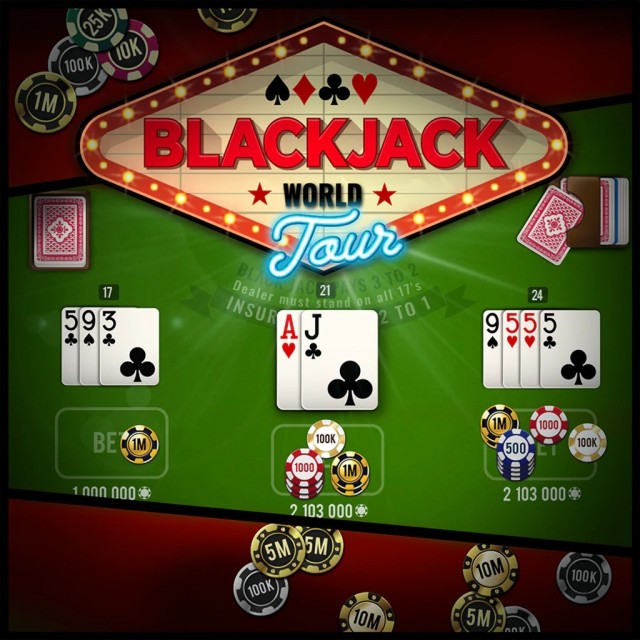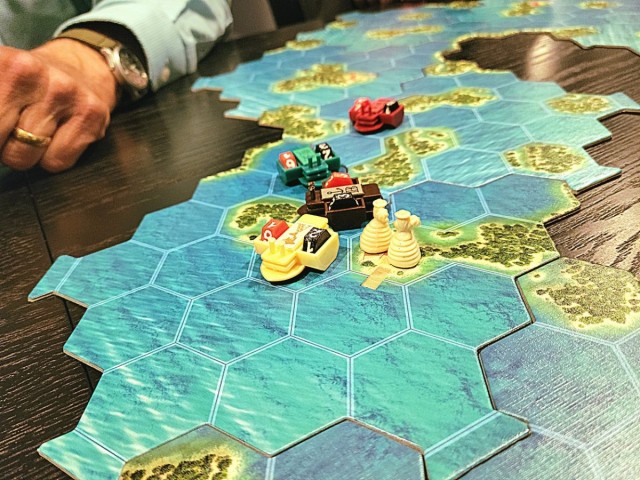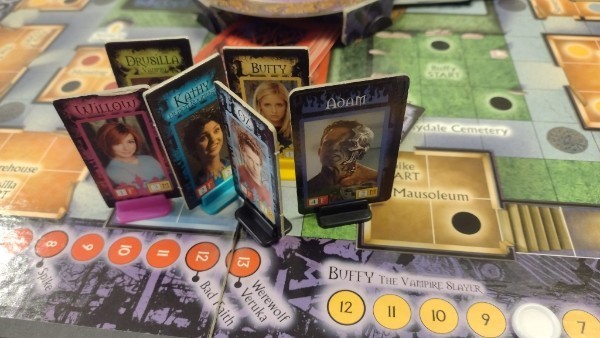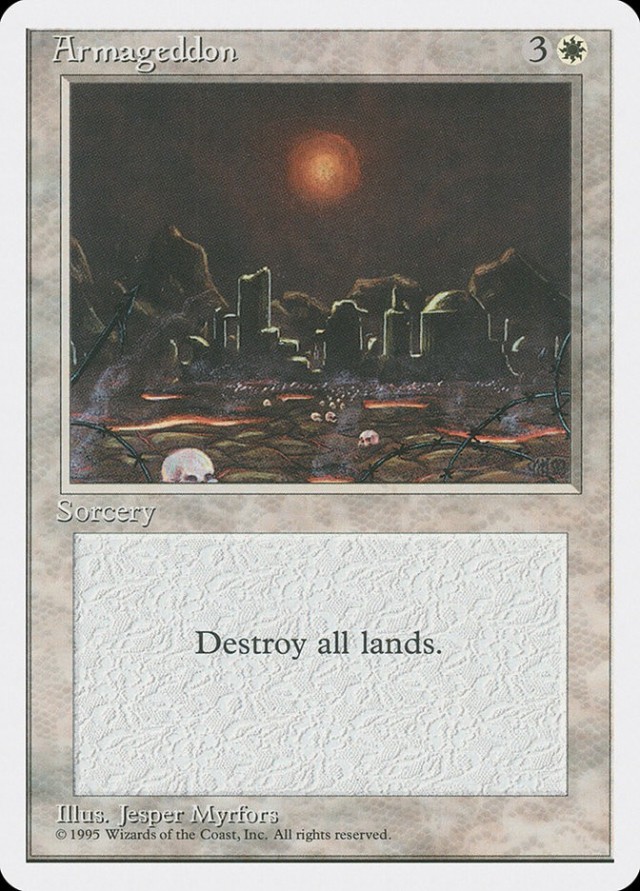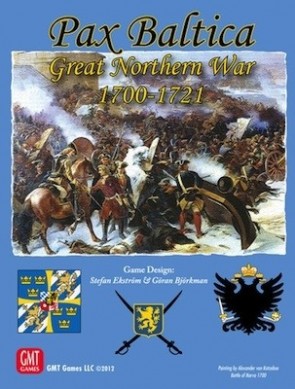Background stolen from GMT:
It is 1700, and a youthful Karl XII has recently come to power as King of Sweden. Rivals around the Baltic Sea seize the opportunity to get their hands on Swedish territory. An alliance is struck between Denmark, Saxony-Poland, and Russia, the last under the vibrant leadership of Tsar Pyotr. This coalition mobilizes to take advantage of the untried King, and break Swedish dominance in the Baltics forever... Thus opened the Great Northern War, ravaging Northern and Eastern Europe for over two decades at the beginning of the eighteenth century. By the end of the war, one nation would lose its status as a Great Power, while another would rise to dominate the region for centuries onward.
PAX BALTICA is a two-player block wargame covering the entire Great Northern War (1700-1721). Published first as a limited “guerrilla” edition in 2009 by Three Crowns Game Productions of Sweden, this new enhanced edition has been revised and upgraded by GMT Games in conjunction with the original designers.
General Comments:
For grognards with overloaded shelves, there's the nagging question of whether yet another block game is really necessary. Despite my initial suspicions, I'll cheerfully report that Pax Baltica is worth the time that I spent on the P500 list waiting for it to arrive.
Let's start with the word on the street. If you cruise the Baltica forums, you'll find a term repeated in jackhammer fashion: chaos. This gets people wondering, since - even if actual war is scattered and slapdash - we generally want our wargames to be sensible and clean, even if dice play a role. So color me surprised when I discovered that the high level of chaos in Pax Baltica is tolerable, and even enjoyable, precisely because it is so high.
One way to screw up a game is to make it highly strategic, then add a devilish scrap of randomness that makes the strategic part irrelevant. I hate those games. Pax Baltica avoids this pitfall by going completely overboard on chance, to the extent that you learn to give in and go along for the ride.
There's no shortage of strategic thinking in Baltica, to be sure. But on the most basic level, you can't plan from turn to turn because - since the number of actions is based on a die roll - you don't how many actions you'll get, if any. It's wacky, and it's frustrating, but it plays against both sides equally. So your opponent will be alternately hosed and ecstatic just as often as you are.
As far as seat time goes, Pax Baltica is longer than most wargames that I play. The mid-range scenario, which will likely be our go-to game, can go for 5+ hours. Four hours is usually my maximum, as that's the length that fits comfortably within a single evening. But here I'll sit tight for the full monty, captivated and entertained the entire time.
A Taste of the Action
Below are excerpts from my first two games of Pax Baltica that provide a sense of the game's structure and flow, as well as the impact of action and event rolls. Both sessions used Scenario A.2 (1700-1710). I was the Coalition player (Russia, Saxony, Denmark) both times.
Game #1:
Note: Most of my Action die rolls this game resulted in events or a single action. Not nice.
My single best move occurred during the first game turn. Sweden avoided direct confrontation and instead repositioned armies and ships, so I took this opportunity to use my single action to activate the Ingermanland group, move an army unit into Nyen, and declare two sieges at once: one in Ingermanland and one in Nyen. Thankfully, but unexpectedly, both sieges were successful – immediately knocking Russia down 8 RP.
In the spring turn of 1701, I declared a siege against Riga (in Livland) with two powerful Army blocks - including Pyotr I, Tsar of Russia. Sweden responded by sending in a 3-block attack force (Karl XII and company) that rolled insanely well: 7 hits on 10 dice in round 1. Karl hit on 4 of 4 dice, with the remaining three hits coming from A1 blocks - which was statistically unlikely, to say the least. On subsequent turns, the Swedes managed to knock Pyotr down to one pip, but was never able to deliver the killing blow.
At critical points in the game, I rolled on the National Politics table: once for Saxony and once for Russia. I did so in last-ditch attempts to gain free recruitment and RPs. Instead, in both cases I rolled a “1”. The horror. So when I needed the RPs the most, they ended up being sliced in half at the worst possible time, and at the cost of one of my own precious actions.
The final year of gameplay (we called the game early) was perhaps the most exciting, as there were numerous turns of events that would have made the rest of the game extremely interesting. With Karl XII deep in Russia, I scored 3 actions and attacked, managed to last three rounds, and killed him (sent him into exile) due to the fact that Karl didn't have a valid retreat locale. In previous turns, I had slowly been bringing up Saxon blocks to finally put pressure on Livland – thus putting in me in good position had we continued the game.
My bold attack on Karl XII left Moscow vacant, which allowed Sweden to move two full-strength army blocks into Moscow behind my enemy lines. Had this siege been successful, Russia would have been forced to be inactive the same turn that Karl was exiled. As it was, the Swedes rolled well, but were one hit shy of taking the garrison.
Game #2:
On the first turn, I rolled an Attrition event that crippled my forward group in Ingermanland, including Pyotr I. Ok, that sucked. Karl XII pounced, which resulted in the eventual elimination of Pyotr in Year 2 or 3. This caused Russia to go temporarily inactive, which allowed the Swedes to push into Poland for the next four years, almost taking the two Polish capitals. Thankfully, Russia re-entered play the first year that she was eligible. Denmark entered play the same year! The Danes eventually landed an invading force by sea, marched across Norway, and took over the Swedish garrisons in Jamtland and Vasternorrland. The game came down to siege rolls on the final turn, with the Swedish player barely pulling out a minor victory.
How It Works:
For the rules-minded, I'll describe how Pax Baltica is mechanically different from other block games.
Major differences:
- The number of actions per player (0-3, with 0 being an event) is determined by each player's 1d6 die roll. So my opponent might be randomly blessed with three actions, while I get stuck with 0-1 actions, and possibly an event. And oh man, you usually do NOT want an event.
- Actions can be spent on reconnaissance (peeking at a neighboring group of blocks), group moves, siege declaration, adding steps to blocks, and rolling on the National Politics table. Be warned: There is a 1 in 3 chance that something horrible will happen on the NP table.
- Foraging (supply) capacity is checked every turn, not every year. So maneuverability is stringently limited by supply unless you're willing to overstack. Which you should be.
- Countries lose resource points (RP) - which are used for block builds - by having their territories garrisoned by the enemy. RPs never go up, only down.
- To receive replacements, blocks need a line of communications (supply line) back to a home province.
- Area control is solely determined by garrison control, not by the presence of blocks. This has subtle and horrifying consequences for retreating and regrouping.
- After three rounds of combat, the player who must retreat is the person not in control of the space (garrison) - not necessarily the attacker.
- Sieges are one-shot deals that do not carry over from turn to turn. Also, garrisons have an intrinsic defense value; they aren't manned by blocks.
- The map covers a huge swath of territory, from Denmark to the Ukraine. In some games, you'll wonder why Poland was included at all. In others, Russia will go inactive and Sweden will strike deep into Poland almost to the Saxon capital.
- Allies have all sorts of nifty special rules that give them historical flavor. The entrance of an ally can be critical, but each ally only has a 1 in 6 chance of activating (or reactivating, if under a truce) each turn. And when they do activate, prepare for fun!
Final Thoughts:
Sweden has more RPs than it knows what to do with, and can be reckless with its vicious A-rated blocks. The Coalition often outnumbers the Swedes in terms of blocks on the map and access to pressure points, but is severely limited by the number of actions rolled. It's an interesting balance that is worthy of further play, and that's never a bad thing.
And if you're interested, here's a link to the full session report for the first game:
http://www.boardgamegeek.com/thread/915316/our-first-play-a-2-scenario
 Games
Games How to resolve AdBlock issue?
How to resolve AdBlock issue? 
